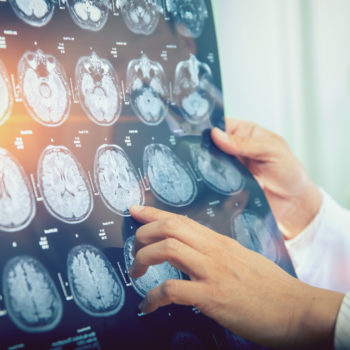The brains of young people who use too much smartphones or the Internet could undergo changes in the neurotransmitters, the chemicals responsible for communication between neurons. It seems that these changes are related to the diagnosis of addiction to smartphones or the Internet, depression and anxiety. These results were presented by a group of South Korean researchers at the last annual congress of the Radiological Society of Northern America held in Chicago on November 30, 2017. We talked about this topic with Paolo Amami, neuropsychologist, and Daniela Calandrella, neurologist.
The study
The study, which however has not yet been published in a scientific journal (so the available information is limited to the abstract of the congress), was conducted by the team of Dr. Hyung Suk Seo, a researcher at Korea University in Seoul 1.
It involved 19 teenagers with an average age of 15 1/2 years and all with smartphone or Internet addiction. Addiction was diagnosed by assessing both the amount of time spent by young people using the internet or smartphone and the negative impact that the use had on daily habits, social life, productivity, sleep and behavior in general. A group of 19 children of the same age with no addiction symptoms was used as a control group.
Searching for neurotransmitters
For the investigation, magnetic resonance spectroscopy was used, a non-invasive method of neuroradiological study that allows to obtain metabolic and histological information of the tissues from a magnetic resonance imaging of the brain.
Scientists were particularly interested in a neurotransmitter, GABA or gammaamine butyric acid, which has an inhibitory function, and two amino acids, glutamate and glutamine, which interact with GABA. GABA is involved in controlling functions such as vision, motion, mood and sleep.
Researchers observed that adolescents with smartphone or Internet addiction problems had higher levels of GABA than glutamate and glutamine in the anterior portion of the cortex of the cingulum. The anterior portion of the cortex of the cingulum is involved both in the functioning of essentially cognitive processes, such as the inhibition of interfering stimuli or responses inappropriate to the purpose of the task, and in motivational processes, particularly in the processes of reinforcement and reward. It is a portion of the brain where the integration of cognitive, emotional and motivational processes takes place.
This alteration of GABA would be reversible: in fact, in twelve of the young people with addiction disorder who took part in a cognitive-behavioral therapy program lasting 9 months, it was observed that the level of GABA “normalized”.
Can smartphone addiction be considered a disorder?
The results of this study should be examined and critically evaluated to verify their reliability, meaning and correspondence with existing literature, and this will only be possible when they are published.
It is necessary to point out that in light of the increase in studies on technological addiction and smartphone addiction in particular, some researchers who are experts in “addiction” have reviewed all the literature on the subject to assess whether this disorder can actually meet the criteria for a correct diagnosis of “addiction” 2. Although most studies state that smartphones create addiction, to date no consensus has been found from the scientific point of view to confirm the existence of this type of addiction. In the latest edition of DSM V (the most popular manual of psychiatric disorders), smartphone addiction as a disorder does not yet appear. The behaviors reported in the studies could be better labeled as problematic or maladaptive use of smartphones, because the impact on social, work and family life would be less severe and there would be no classic withdrawal symptoms, at least not physical, typical of substance addiction disorders.








